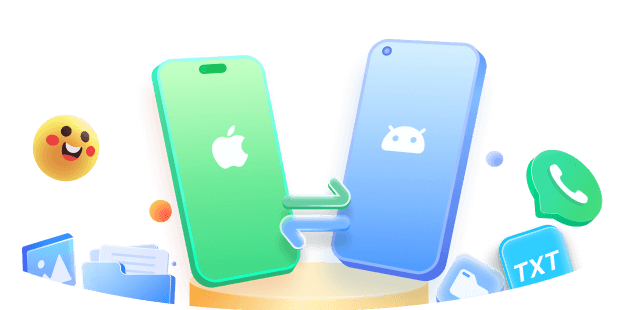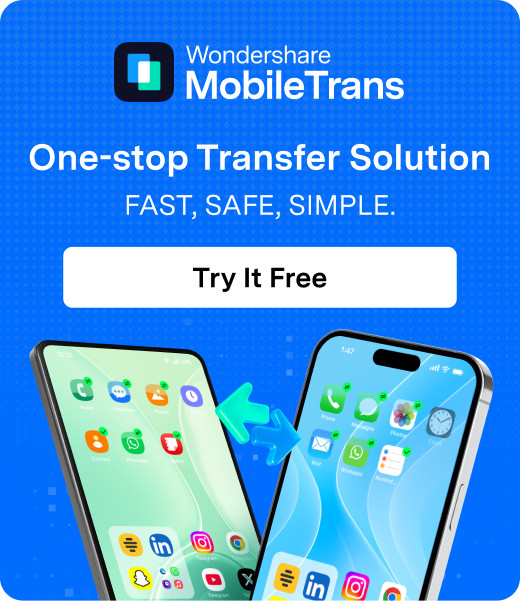iTunes is the official software application developed by Apple to sync iPhone data between the phone and a Windows PC or Mac computer. iTunes makes it easy to manage media content, upload photos, sync contacts, transfer files, and do a lot more with an iPhone.
However, many iPhone users have reported the "iPhone not found in iTunes" error while trying to connect their device to the computer. This can prevent you from accessing the phone's data and doing essential management tasks.
In this detailed guide, we will discuss the top reasons for the iPhone not showing up on iTunes and proven solutions to address the problem on both Windows and Mac. We will also look at how to quickly transfer iPhone files to a computer using a third-party desktop tool as an iTunes alternative.
In this article
iPhone Not Found in iTunes: Top Reasons
There can be a few reasons why an iPhone may not show up or get detected in iTunes on your computer. Let's look at the major causes behind this error:
- Outdated iTunes version - If you are running an old version of iTunes, it may not fully support the iOS version on your iPhone. This can prevent proper detection.
- Connectivity issues - Faulty USB cables, blocked ports, driver problems, or connectivity settings can prevent the phone from connecting to iTunes.
- Sync issues - Some underlying software issues with iTunes sync components can also lead to detection problems.
- iPhone stuck in recovery mode - If your iPhone entered recovery mode and is stuck there, iTunes may not recognize it.
- Jailbroken iPhone - Jailbreaking modifies an iPhone's software and can occasionally lead to connectivity problems with iTunes.
- iTunes installation issues - Corrupted iTunes components or leftover files from a problematic installation/uninstallation can also be responsible.
Now that we've looked at the key reasons, let's see how to troubleshoot and fix the annoying iPhone not showing up in iTunes problem.
How to Fix the iPhone Not Found in iTunes Issue
There are several things you can try yourself to get iTunes to detect the iPhone properly. Follow the solutions below one by one until the issue is resolved:
Solution 1: Check the USB Cable
The first thing is to check whether the Lightning cable you are using to connect the iPhone to the computer is working fine. Try these steps:
- Connect the iPhone to another computer using the same cable to test if it is detected.
- Replace the current Lightning cable with a new official Apple cable recommended for syncing.
- Make sure the cable connectors are clean and there is no damage, bends, or loose ends.
- Check the Lightning port on your iPhone for any dust, lint, or debris. Clean it out with a toothpick or soft brush.
- Try connecting the iPhone to the computer USB port directly instead of through a hub/splitter.
Solution 2: Check iTunes Version
An outdated version of iTunes might not work optimally with the iOS version on your iPhone. Check these:
Launch iTunes, click on Help > Check for Updates. Update to the latest iTunes version from the App Store on Mac or the iTunes website on Windows.

If updating doesn't help, downgrade to an older stable iTunes version that is compatible with your iPhone OS.
Solution 3: Reset Location and Privacy Settings
Resetting all location and privacy permissions can help fix detection issues. Follow these steps on your iPhone:
On your iPhone, go to Settings > General > Reset and tap Reset Location & Privacy.

This will reset location access and advertising permissions given to various apps and services on the device. Try connecting the iPhone to iTunes after this reset.
Solution 4: Update Drivers
Here comes another quick fix to resolve the iPhone not found in iTunes issue. Outdated, corrupt, or incompatible drivers can also stop iTunes from recognizing the iPhone. Try updating drivers:
On Windows, check for any available driver updates via Device Manager. Also reinstall iTunes-related drivers like Apple Mobile Device, Apple Application Support, etc.

On Mac, go to About This Mac > System Report and update any drivers listed under USB. Also, try reinstalling the latest macOS updates.
Solution 5: Disable or Uninstall third-party Security Software
Firewall protections, antimalware apps, or security solutions can occasionally block iTunes access to the connected iPhone.
As a workaround, you can temporarily disable or uninstall such software and reconnect the device.
Solution 6: Uninstall and Re-install iTunes
If all else fails, completely removing iTunes and doing a fresh install can often resolve stubborn iPhone detection issues.
On Windows, use the official Microsoft uninstall tool to remove all iTunes components. Then download the latest version from Apple's website and install it.

On Mac, launch Finder > Applications > iTunes and drag the iTunes app to Trash. Then get it again from the App Store.
After reinstalling iTunes, reconnect the iPhone and check if the issue is fixed. Also, update to the latest iOS firmware via iTunes if available for your device.
Transfer Files Easily From iPhone to Computer via MobileTrans
iPhone not seen in iTunes? Well, if you are unable to fix the iPhone not getting detected in iTunes, you can also use the MobileTrans - Phone Transfer to manage data on your iPhone without iTunes.
Developed by Wondershare, MobileTrans allows seamless phone-to-computer file transfer with a simple drag-and-drop interface. You can quickly move photos, music, videos, contacts, messages, bookmarks, and more between iPhone and computer.
Key features of MobileTrans:
- Works flawlessly for all iOS and Android devices.
- Provides fast, reliable transfers between phone and PC/Mac.
- Allows backup of iPhone data to computer and restoration.
- Transfers select data instead of full backup.
- Manages and organizes phone data easily on a computer.
- Supports the latest iPhone models.
When you are unable to connect an iPhone to iTunes, simply use the MobileTrans desktop app as a workaround. It is a breeze to install and handle file transfers without iTunes errors or connection issues.

 4.5/5 Excellent
4.5/5 ExcellentHere is how you can use the Wondershare MobileTrans tool to transfer files from your iPhone to the computer in just a few clicks:
Step 1: Download and install MobileTrans on your Windows PC or Mac computer. Launch the app after installation. Use a Lightning cable to connect your iPhone to the computer and tap 'Trust' if prompted on the device.
Step 2: In MobileTrans, switch to the “Phone Transfer” tab and then click 'Export to Computer' from the homepage. The app will automatically detect your connected iPhone.
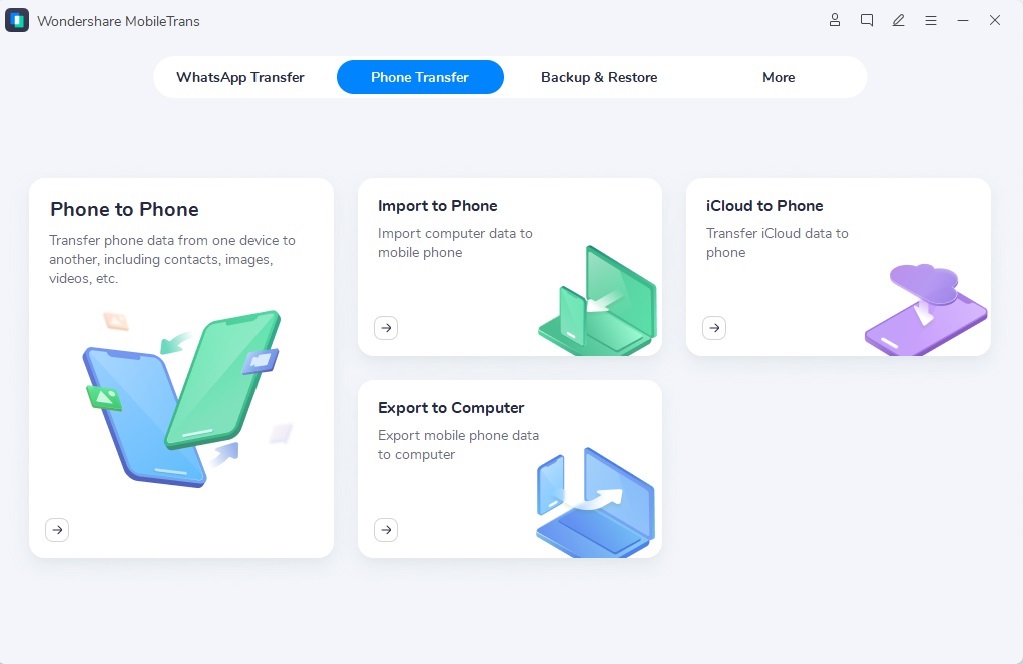
Step 3: The left panel will now show data categories like Photos, Music, Videos, Information, Apps, etc. Click the data types you want to transfer.
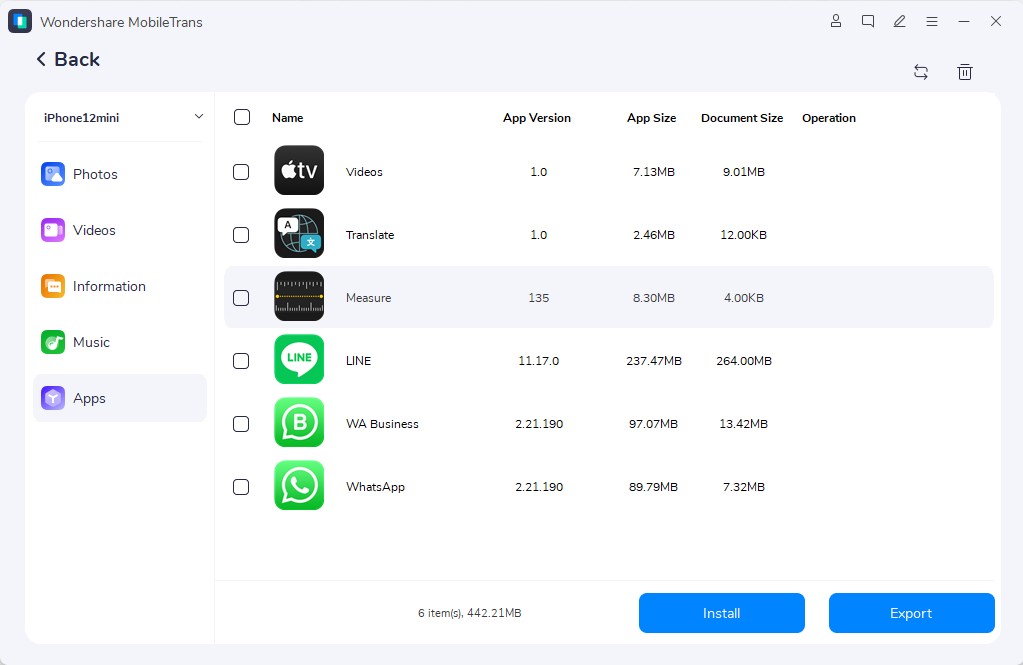
Step 4: The app will load the selected data from the iPhone to the right panel. Review and select the files/data you wish to export to the computer.
Step 5: Click 'Export’ at the bottom right of the interface. Select the destination folder on the computer.
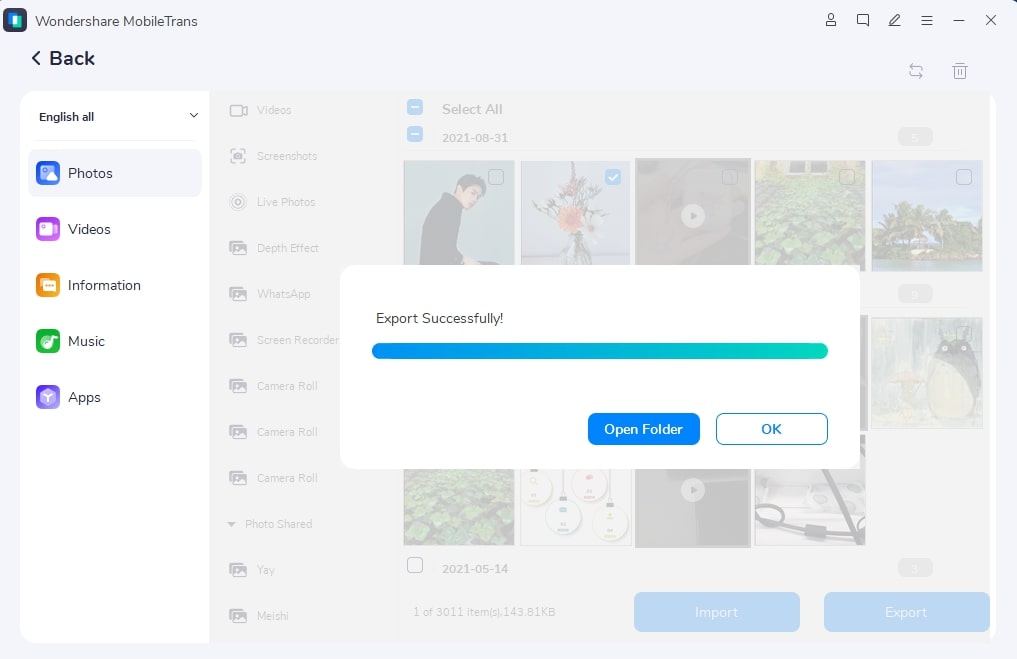
Step 6: MobileTrans will then quickly transfer the chosen files and data from the iPhone to the computer. The transfer speed is very fast. When the transfer is completed, you can click 'OK' and safely disconnect your iPhone. All selected data would now be available on the computer for viewing and backup.
That's it! In just a few clicks, you can use MobileTrans to seamlessly migrate photos, music, messages, contacts, and other files from iPhone to computer without requiring iTunes or wireless networks.
Conclusion
The “iPhone not seen in iTunes” issue can be frustrating, but as you saw, there are multiple effective fixes you can try to resolve it. The problem is often due to connectivity issues with the cable, USB ports, or iTunes version mismatch. Resetting permissions, updating drivers, reinstalling iTunes, and using third-party software are other options.
We hope this guide has helped you understand and troubleshoot the "iPhone not found in iTunes" error successfully. Do let us know which of these solutions worked for you or if you have any other tips to share with our readers.

 4.5/5 Excellent
4.5/5 ExcellentFAQ
-
Q1. Why is my iPhone not connecting to iTunes?
Some common reasons for iPhone not connecting to iTunes are - faulty or worn-out USB lightning cable, outdated iTunes version, blocked/damaged USB port, corrupt iTunes installation, and incompatible device software and drivers. -
Q2. How do I force my iPhone to show up on iTunes?
Try changing the USB cable, updating iTunes, clearing USB port dust, removing any case/cover from your iPhone, disabling VPN/antivirus software, resetting network settings on the iPhone, and rebooting your computer. If nothing works, uninstall and reinstall iTunes. -
Q3. What should I do if my iPhone is not recognized in iTunes?
First, restart your iPhone and computer, check/change the USB cable, and connect the iPhone to another system to test. Also, update iTunes, drivers, and Windows/macOS to the latest versions. Clear the iPhone dock port of any debris. Disable firewall and security tools temporarily. -
Q4. Why is my iPhone stuck in recovery mode and not connecting to iTunes?
Force restart your iPhone to exit recovery mode - press Volume Up, Volume Down, then hold Power until you see the Apple logo. Try a different USB port, cable, and computer. Reinstall the latest iTunes version. Restore the iPhone using recovery mode if needed. -
Q5. How can I view and transfer files from my iPhone without iTunes?
You can use a third-party desktop app like MobileTrans to easily view, manage, and transfer photos, music, videos, messages, contacts, etc. from iPhone to computer without iTunes errors or connection issues.
